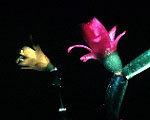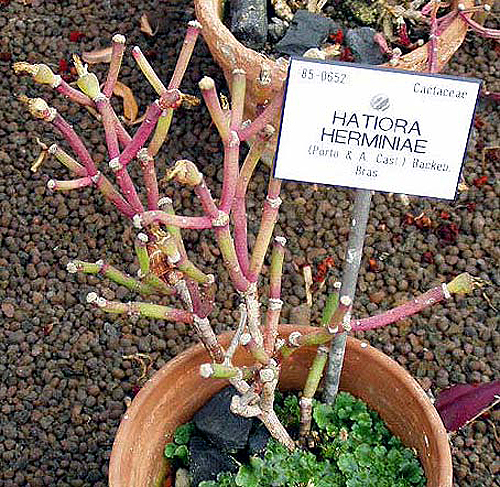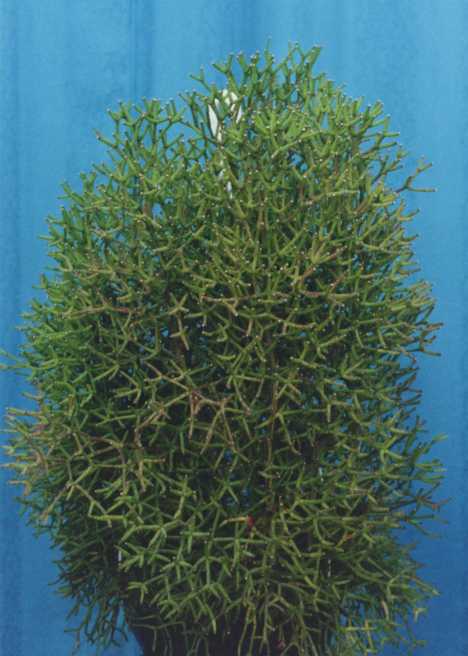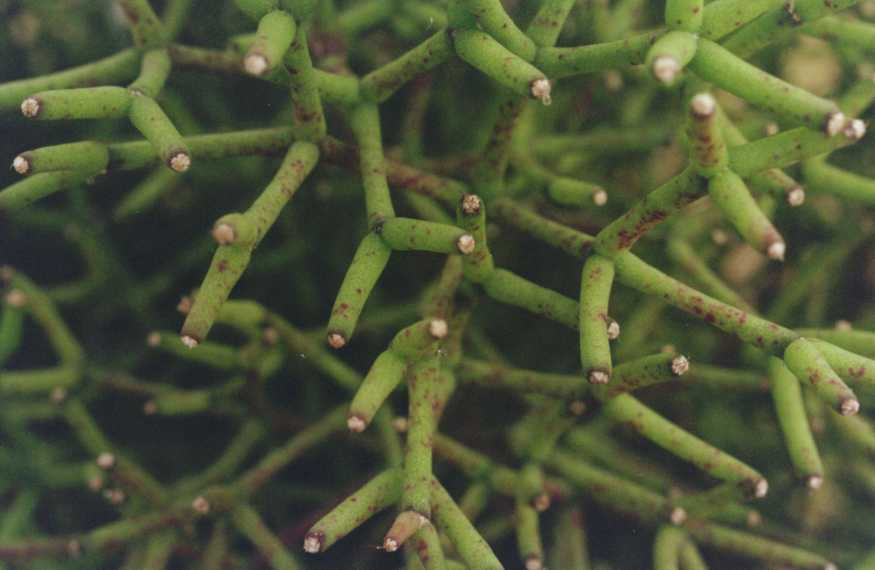|
|
||||||||
| Hatiora
herminiae (Campos-Porto & Castellanos.) Backeberg ex Barthlott
in Bradleya 5: 100 (1987) |
||||||||
|
H. herminiae looks a lot like H. salicornoides and also grows upright but doesn't quite have the same little stems segments. What is unique about this species is its deep rose-pink flowers. The rose photo (35mm slide) was obtained by Ken Friedman from Barthlott in the late 1970s; it appears in The Illustrated Encyclopedia of Cacti by Clive Innes and Charles Glass. Innes & Glass say herminiae is best grown as a graft.
DISTRIBUTION. Brazil (S Minas Gerais?, E Sao Paulo): Serra da Mantiqueira, epiphyte on Araucaria in cloud forest, to 2000 m altitude. Photos, top to bottom:
Below: H. herminea, 85-0652 Brussels BG ©KAF Like all the Rhipsalis and Hatiora at Brussels, this one was sun-reddened.
|
|||||||
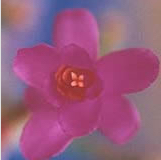 |
||||||||
|
|
||||||||
|
|
||||||||
